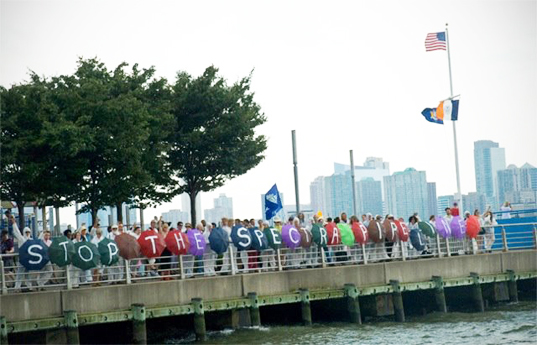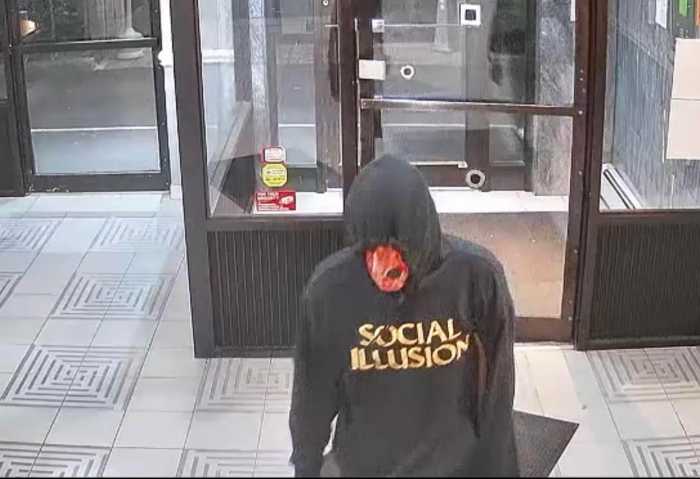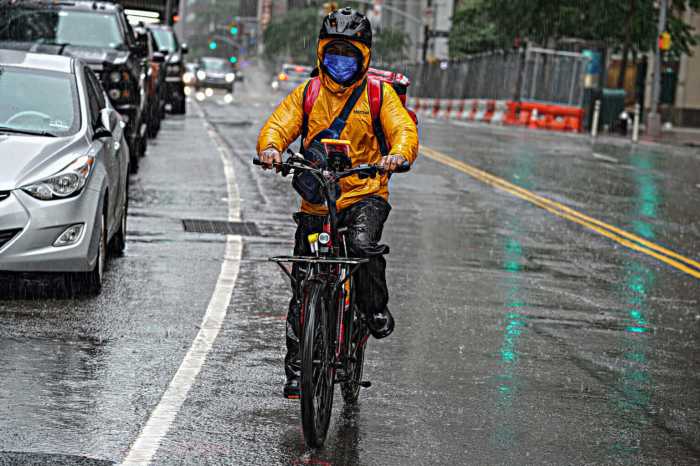BY EILEEN STUKANE | Evidenced by the large turnout at the May 14 public forum “Lung Cancer and New York City Kitchens: Why Increased Radon in Natural Gas Could Be a Public Health Disaster,” local residents are growing increasingly concerned about seemingly high radon levels in the natural gas that the Spectra Energy pipeline will be bringing to New York City. The newly constructed pipeline enters Manhattan at Gansevoort Peninsula, near West 14th Street.
The event, which was primarily sponsored by The Cooper Union Institute for Sustainable Design, along with six other organizations related to either health or the environment, had backing from a strong cohort of 60 other community, environmental, health and political organizations. About 350 people gathered in The Great Hall at Cooper Union to learn from a panel of five experts about radon: a tasteless, odorless, colorless gas — the leading cause of lung cancer among nonsmokers, and second leading cause among smokers — that may be arriving in our homes in unsafe levels to breathe.
The Environmental Protection Agency (EPA) estimates 21,000 U.S. lung cancer deaths a year are due to radon inhalation. Noting that sobering figure, the panelists — from the fields of environmental law and public and occupational health — explained just how the radon content will increase in the gas we are using to cook in our kitchens and heat our homes, and alerted everyone to the fact that this could potentially be a major public health issue.
The forum concluded on a note of hope, however, as Assemblymember Linda Rosenthal made a powerful announcement of her sponsorship of a bill “to amend the public health law in relation to the protection of public health from exposure to radon in natural gas.”
But first, everyone heard the facts.
Jeff Zimmerman, an environmental lawyer with a degree in physics, has spent most of his career with the Environmental and Natural Resources Division of the U.S. Department of Justice and now represents various environmental and citizen groups. He explained that radon gas results from the radioactive decay of uranium, thorium and radium, minerals present in significant quantity in the Marcellus Shale. The Marcellus Shale stretches thousands of feet below ground, from West Virginia, through Pennsylvania, into a bit of Ohio and along the west side of the Hudson River in New York. Hydraulic fracturing (hydrofracking) blasts open the underground rock by using an array of unspecified chemicals and tons of water and sand to release the gas from the shale’s uranium and radium-226. Gas from the disturbed minerals contains, as a side effect, radioactive radon.
Radon is present in all natural gas, and Zimmerman, along with other panelists, decried the fact that there is little information, as very few studies have looked at radon levels in natural gas. The EPA considers 4 picocuries per liter (pCi/l) as the safe level in homes. The World Health Organization cites a lower 2.7 pCi/l as safe. Zimmerman explained that most of our New York City natural gas has come from the Gulf Coast, and studies from offshore Louisiana wells have shown that this gas starts at 5 pCi/l.
Radioactive radon has a relatively short half-life of 3.8 days, after which its concentration drops in half. After another 3.8 days, that half divides in half, so it’s a fourth of the original, and so on. It dissipates quickly. Radon in the gas New Yorkers have been receiving from the Texas-Louisiana coast takes six to eight days to travel through pipelines to get here, so it is diluted and the levels we are breathing in are considered safe.
However, natural gas hydrofracked from the Marcellus Shale, which Zimmerman explained is a “dark shale” — indicating high uranium and therefore high radon content — will be mixed into the natural gas travelling through the Spectra Energy pipeline from the Gulf Coast and other locations. The Marcellus Shale is already being hydrofracked in nearby Pennsylvania and in certain locations in Upstate New York, and more locations may be approved in the future. Gas from the close-to-home Marcellus Shale area travels an estimated 10 miles per hour and can be here to fire our gas stoves in less than a day, not the usual six to eight days, and certainly not enough time for radon’s radioactivity to reduce to safer levels.
A recent U.S. Geological Survey tested radon levels at 11 wellheads — chosen by the industry, according to Zimmerman — in the Marcellus Shale in Western Pennsylvania and found 37 pCi/l as the median radon reading. This is not anywhere near the EPA’s safe level of 4 pCi/l of radon in our homes.
Another panel member, Elizabeth Glass Geltman of CUNY School of Public Health, also noted that based on reviews of natural gas from other parts of the country, which she did not see relating to more local natural gas, New York State’s Department of Environmental Conservation (DEC) and Department of Health (DOH) have stated that they “do not believe that radon in Marcellus Shale gas poses a significant risk to residents in homes that utilize gas.” She remarked that, in “backwards thinking,” the DOH has stated that if New York State permits further hydrofracking of the Marcellus Shale, the DOH will assess radon levels through samplings, “in order to verify that they do not pose an unanticipated health risk to end-users of the gas.” Geltman added, “If you wait for that to happen, the infrastructure will be in place and the argument will be that we can’t change the infrastructure.”
Dr. Sheila Bushkin-Bedient of Concerned Health Professionals of New York highlighted those who would be most vulnerable to radon inhalation: children, the elderly and those with compromised immune systems.
Jill Greenberg of the New York Committee for Occupational Safety and Health, and Heather Carlucci-Rodriguez, representing Chefs For The Marcellus, both emphasized the added risk to restaurant workers, as well as maintenance workers who service utilities, buildings, subways and schools.
The evening’s highlight, however, came at the end when Assemblymember Rosenthal announced her sponsorship of a new bill to create a monitoring process for checking radon levels in natural gas at the city gates. Specifically, the bill requires the Bureau of Environmental Radiation Protection, which is under the State DOH, along with consultation with DEC and the Public Service Commission, to create a compliance assurance system to monitor levels of radon and its progeny at each city gate location in real time, as well as periodic inspection. Stipulations about acceptable radon levels, procedures to follow should these levels not be reached and the grounds for civil action by individuals, are all included in the bill. In the Assembly, the bill is Public Health Law A 6863, and is co-sponsored with state Senator Diane Savino, who presented it in the Senate as Public Health Law S 4921.
These bill numbers are important because if the bill is to be signed into law, New Yorkers who support it must e-mail, snail mail, text or call their representatives, in both the Assembly and state Senate and cite support of the bill numbers. For Assembly representatives’ contact information, visit assembly.state.ny.us/mem. For state Senators’ contact information, visit nysenate.gov/senators.
Rosenthal emphasized that before the Assembly’s session ends in six weeks, the bill needs as much support as possible to show Governor Cuomo and Mayor Bloomberg that public energy is behind it.
“They need to be inundated,” she said. She recalled 2001, when after 9/11, EPA Director Christine Todd Whitman obstructed the truth and told Lower Manhattan residents the air was safe to breathe. Rosenthal believes that the government should be there to protect its citizens, and this bill is legislation for just such protection.
City Councilmember Gale Brewer was not at the forum, but she is working with attorneys on a local level, to see what jurisdiction the city has to require radon testing. Her goal is to propose a resolution through the City Council.
David Braun, co-founder of the anti-fracking group United For Action, was seated next to Rosenthal at the forum. He summed up the event and the risk at stake.
“It’s up to us,” he said, “to raise our voices and say, ‘We are not your lab rats in a radon gas experiment.’ ”




































